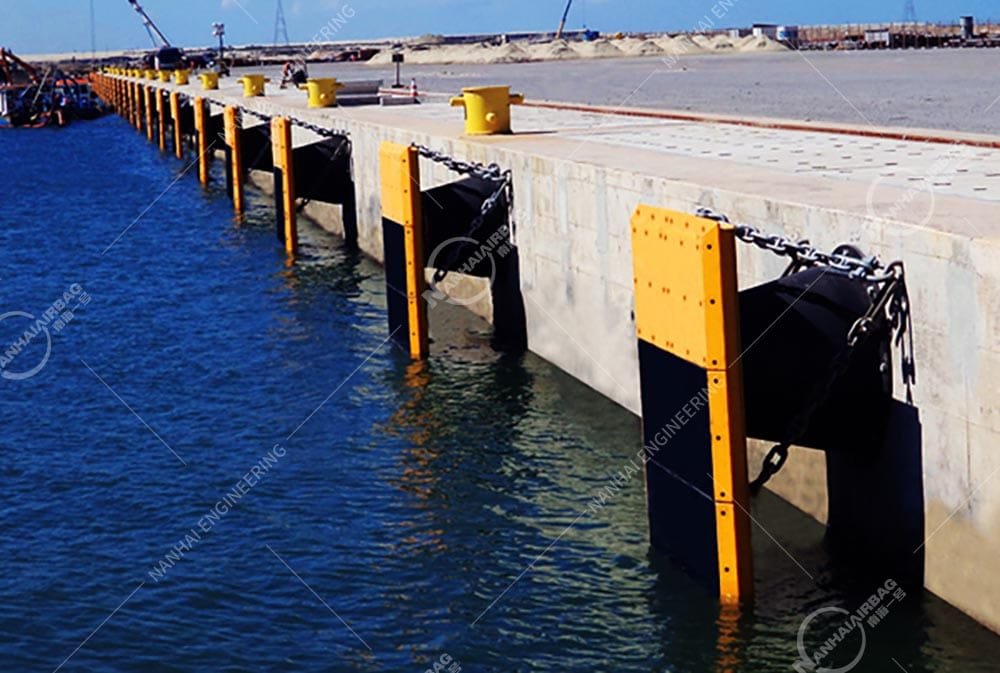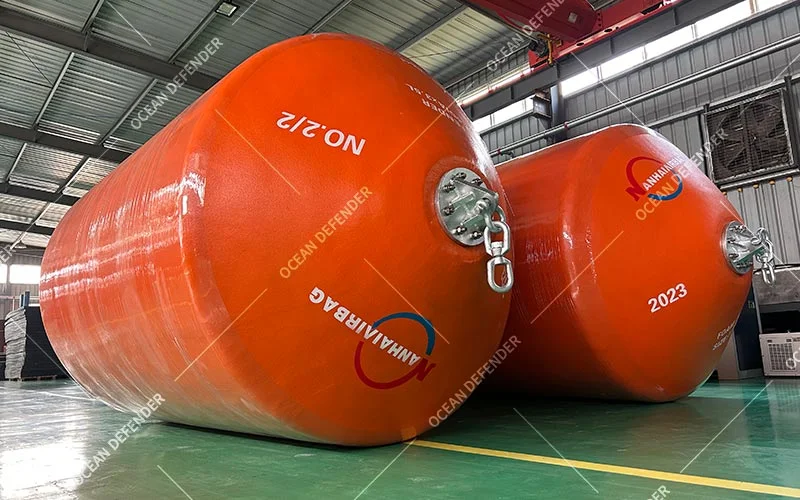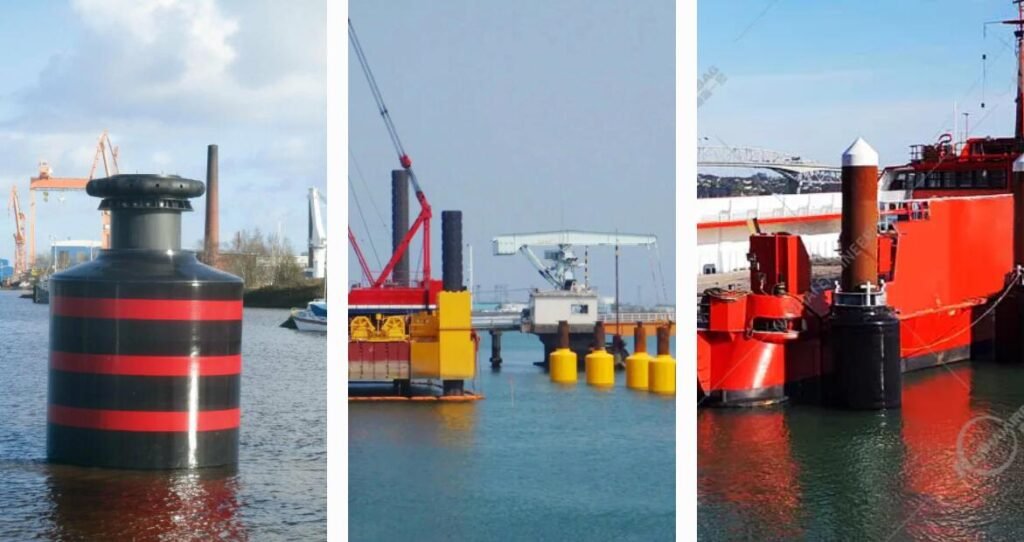What is a D fender?
05/09/2025What are the different types of ship launching?
05/12/2025Why Are Marine Fenders Provided on Docking Platforms?
Marine fender—also known as ship fender, rubber fender, or marine dock fender—are essential components installed on docking platforms to absorb the kinetic energy of vessels during berthing, thereby preventing damage to both the vessel and the dock structure.
Benefits of Marine Fenders on Docking Platforms
- Damage Prevention: Marine fenders absorb the impact energy during berthing, protecting both the vessel and the dock from structural damage.
- Safety Enhancement: By reducing the force of impact, fenders enhance the safety of docking operations for crew and dock workers.
- Cost Efficiency: Preventing damage reduces maintenance and repair costs for both ships and docking facilities.
- Operational Efficiency: With fenders in place, vessels can dock more quickly and safely, improving the overall efficiency of port operations.
Types of Marine Fenders
Rubber Fenders: Traditional and widely used, rubber fenders are durable and suitable for various docking scenarios.

Foam Filled Marine Fenders: These fenders consist of a closed-cell foam core and a tough outer skin, offering high energy absorption and low reaction force. They are unsinkable and require minimal maintenance.

Inflatable Marine Fenders: Also known as pneumatic fenders, they are lightweight and suitable for temporary or emergency docking situations. However, they require regular maintenance to ensure proper inflation. The most common application for inflatable marine fenders is ship-to-ship operations.

Donut fenders: Donut fenders are brightly colored and can serve as a guide. They are usually placed at the corners of a structure or the entrance to a narrow dock.

Hydro pneumatic fenders: Inflatable fenders are suitable for submarines and semi-submersible vessels with STD or STS underwater mooring requirements. Part of hydro-pneumatic fender is filled with water as a counterweight to make the fender float in an upright position. When berthing, the fender can help to keep the reaction force small, can protect the ship hull well.

Applications of Marine Fenders
Marine fenders are utilized in various settings, including:
- Ports and Harbors: To accommodate vessels of different sizes and protect dock structures.
- Offshore Platforms: Providing cushioning during the transfer of goods or personnel between vessels and platforms.
- Ship-to-Ship Operations: Ensuring safe contact between vessels during cargo transfers at sea.
Choosing the Right Marine Fender
Selecting the appropriate marine fender depends on factors such as vessel size, docking frequency, environmental conditions, and specific operational requirements. Consulting with marine fender specialists like NANHAI can help determine the most suitable type and configuration for your needs.
People Also Ask
What is the purpose of marine fenders?
Marine fenders absorb a vessel’s kinetic energy during berthing, preventing damage to both the vessel and the docking structure.
How do foam filled marine fenders differ from rubber fenders?
Foam-filled marine fenders have a closed-cell foam core and are unsinkable. They offer high energy absorption and low maintenance. Rubber fenders are solid and durable, but may not provide the same level of energy absorption.
Are inflatable marine fenders reliable?
Inflatable marine fenders are effective for temporary or emergency docking situations but require regular maintenance to ensure proper inflation and functionality.
Where can I purchase marine fenders?
Marine fenders can be sourced from specialized manufacturers and suppliers. It’s important to choose a reputable provider, such as NANHAI, to ensure quality and suitability for your specific application.
Investing in the right marine fender system is crucial for the safety and efficiency of docking operations. Whether you require rubber fenders, foam filled marine fenders, or inflatable marine fenders, selecting the appropriate type will ensure optimal protection for your vessels and docking infrastructure.
